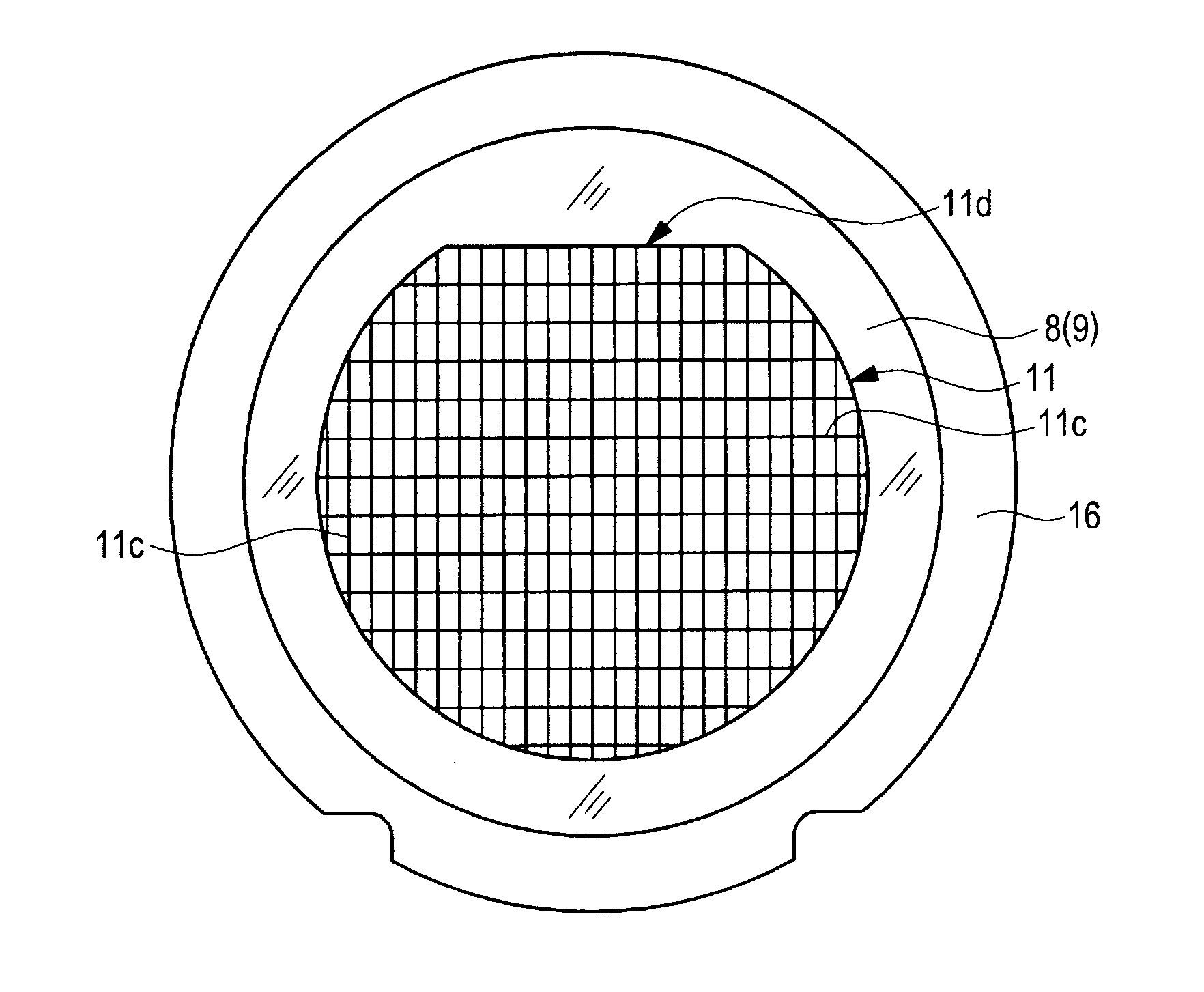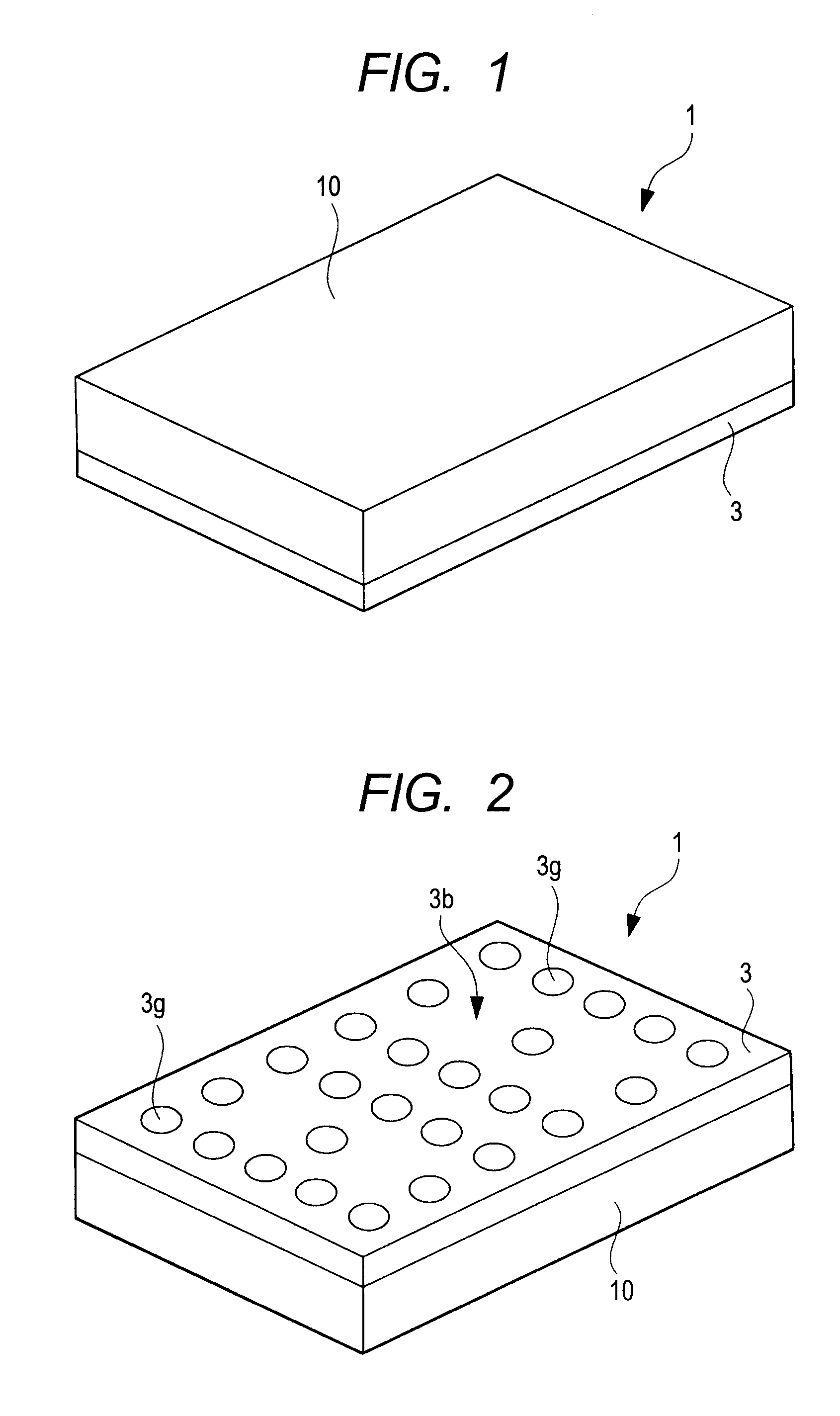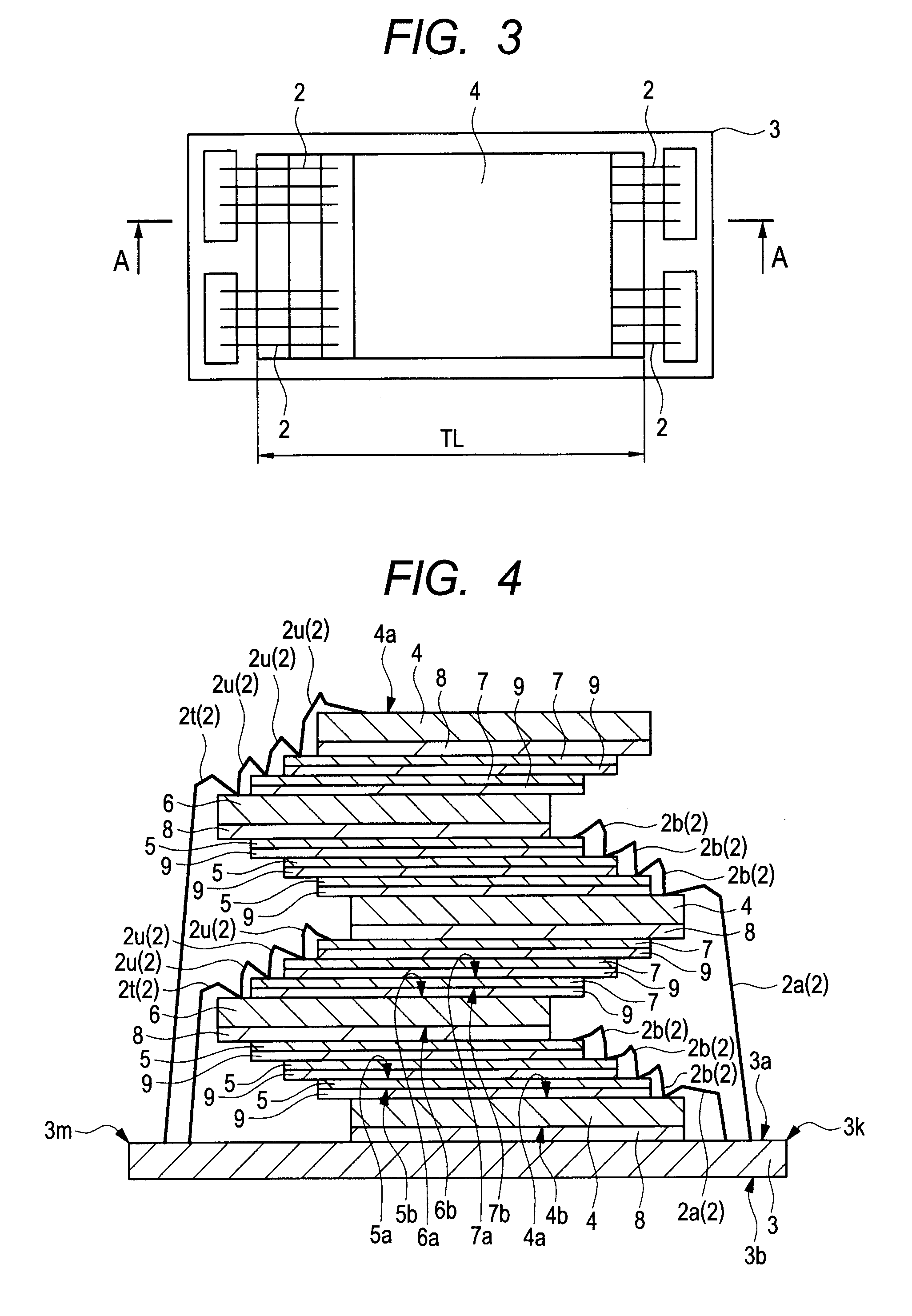Method of manufacturing semiconductor device
a manufacturing method and technology for semiconductor devices, applied in semiconductor devices, semiconductor/solid-state device details, electrical devices, etc., can solve problems such as chip cracking, and achieve the effect of reducing chip cracking
- Summary
- Abstract
- Description
- Claims
- Application Information
AI Technical Summary
Benefits of technology
Problems solved by technology
Method used
Image
Examples
first embodiment
Modifications to First Embodiment
[0265]Description will be given to modifications to the first embodiment.
[0266]FIG. 44 is a perspective view illustrating the structure of a semiconductor device in a first modification to the first embodiment of the invention; FIG. 45 is a perspective view illustrating an example of the structure of the semiconductor device in FIG. 44 on the back surface side; and FIG. 46 is a sectional view illustrating the structure of a semiconductor device in a second modification to the first embodiment of the invention. FIG. 47 is a plan view illustrating the structure of a semiconductor device in a third modification to the first embodiment of the invention with a sealing body seen through; FIG. 48 is a sectional view illustrating an example of a structure obtained by cutting the semiconductor device along line A-A of FIG. 47; and FIG. 49 is a sectional view illustrating an example of a structure obtained by cutting the semiconductor device along line B-B of ...
second embodiment
[0273]FIG. 50 is a plan view illustrating an example of the structure of a semiconductor device in the second embodiment of the invention with a sealing body seen through; FIG. 51 is a sectional view illustrating an example of the structure obtained by cutting the semiconductor device along line A-A of FIG. 50; FIG. 52 is a sectional view illustrating an example of the structure obtained by cutting the semiconductor device along line B-B of FIG. 50; and FIG. 53 is an enlarged partial sectional view illustrating the structure of a semiconductor device in a first modification to the second embodiment of the invention.
[0274]The semiconductor device in the second embodiment illustrated in FIG. 50 to FIG. 52 is obtained by laminating thin-type semiconductor chips in 16 tiers over a wiring board 3 as the base material as in the first embodiment. The semiconductor device has such a structure that semiconductor chips are laminated by eight tiers with the lamination direction changed by 90 d...
PUM
 Login to View More
Login to View More Abstract
Description
Claims
Application Information
 Login to View More
Login to View More - R&D
- Intellectual Property
- Life Sciences
- Materials
- Tech Scout
- Unparalleled Data Quality
- Higher Quality Content
- 60% Fewer Hallucinations
Browse by: Latest US Patents, China's latest patents, Technical Efficacy Thesaurus, Application Domain, Technology Topic, Popular Technical Reports.
© 2025 PatSnap. All rights reserved.Legal|Privacy policy|Modern Slavery Act Transparency Statement|Sitemap|About US| Contact US: help@patsnap.com



